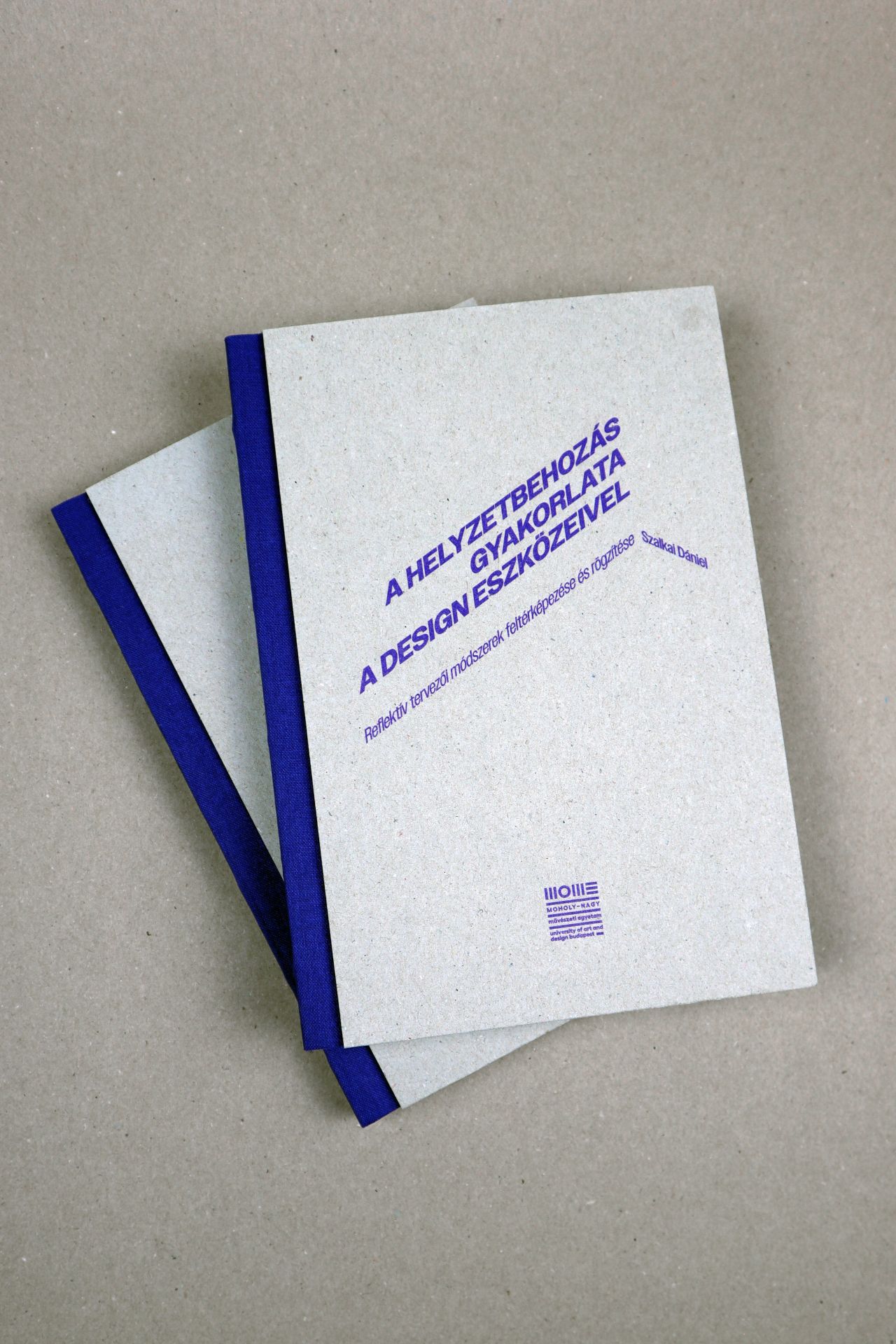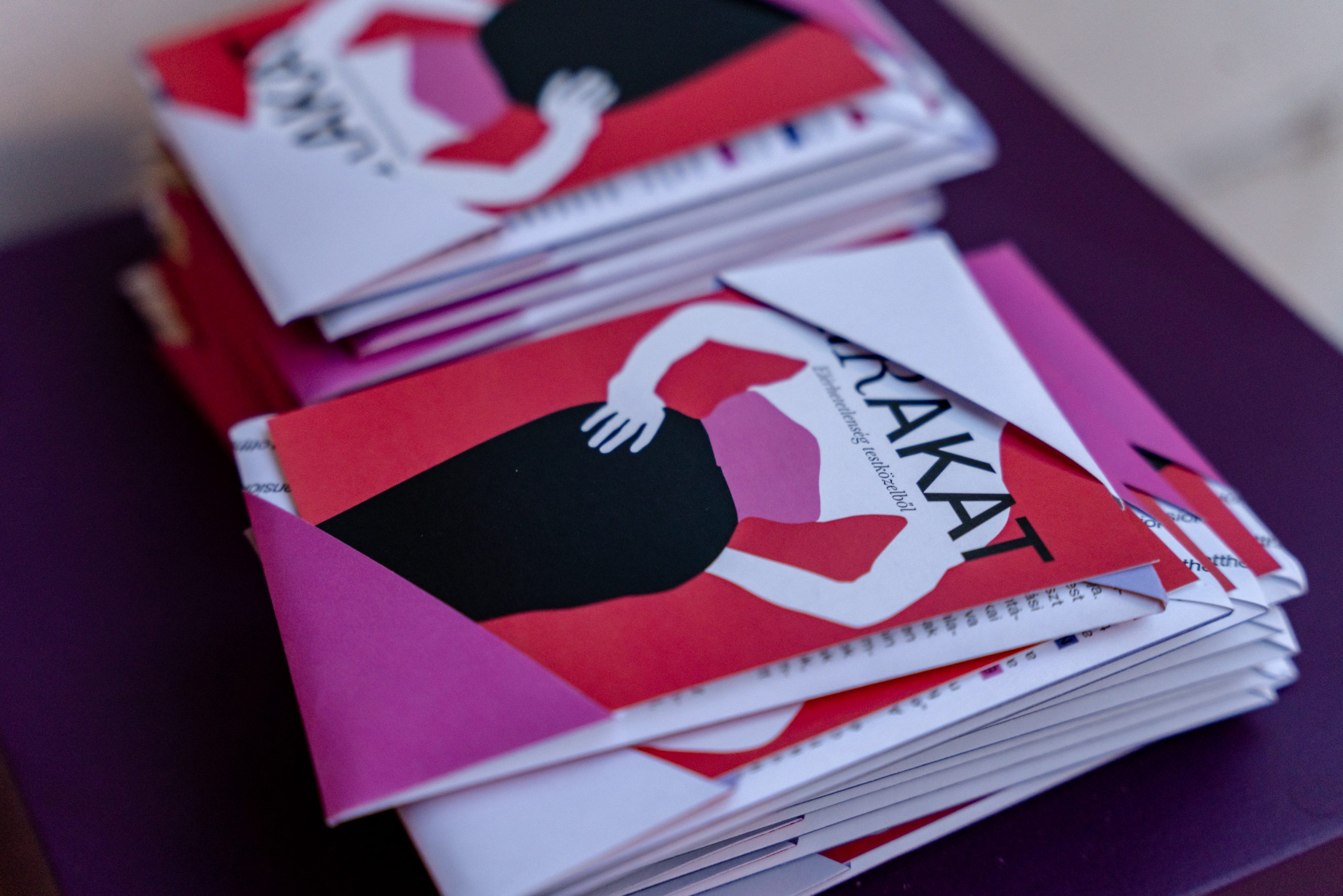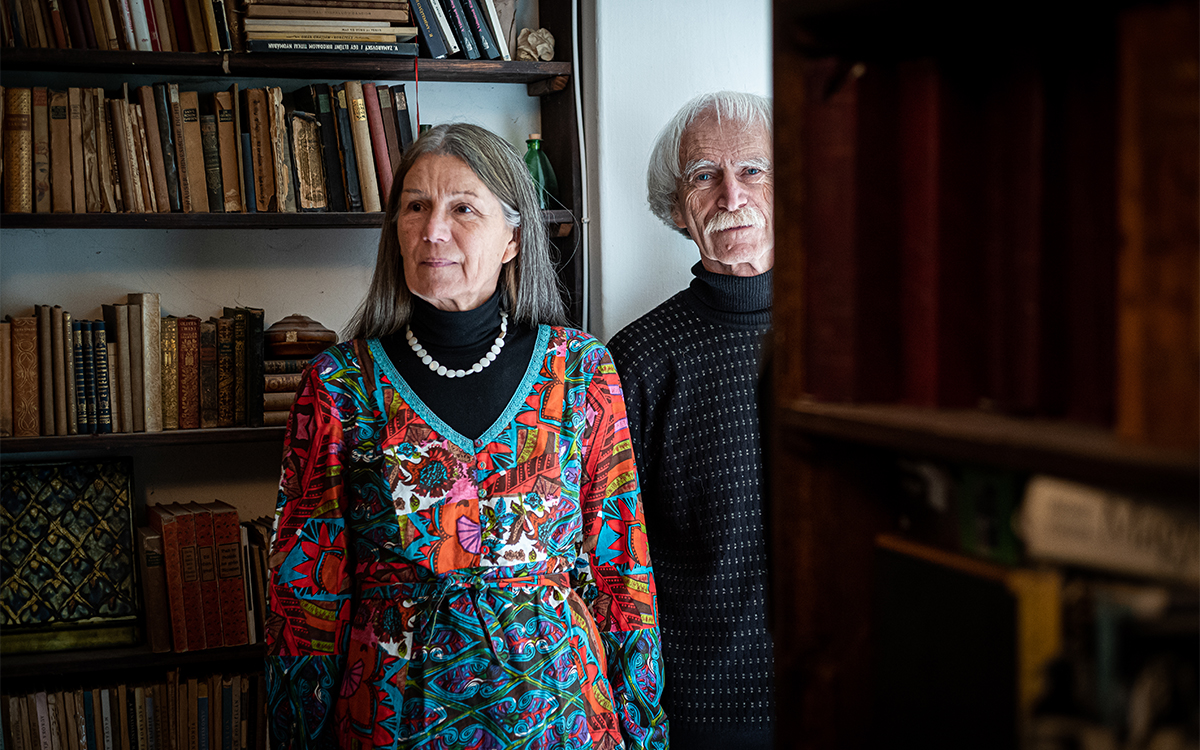
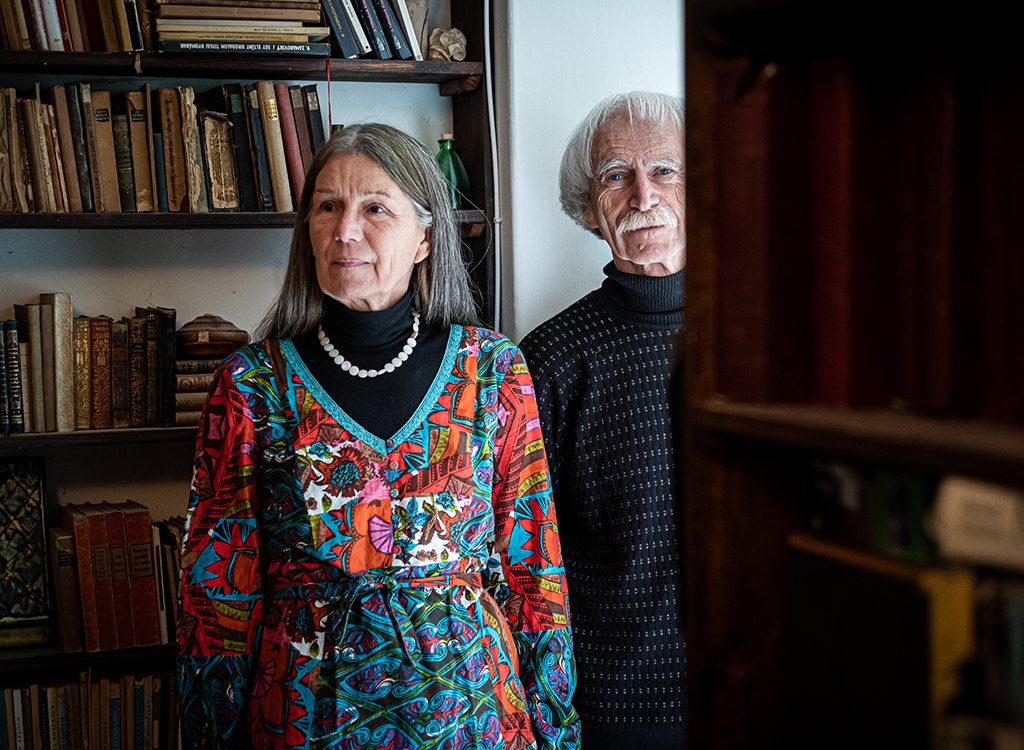
“It would be way more effective for humanity if the goal was to synthesise individual perspectives”
Do you believe in having a soul or not? Do you use your balcony to sit out and chill, or to cram it full of junk? What words do you use to praise your children, and for what reasons do you scold them? These and similar important questions are listed on the back cover of Ágnes Kapitány and Gábor Kapitány’s book published this year. Symbolisation – How We Act Using Symbols stands out with more than just its suggestive blurb. First, it is a major milestone in the joint publication and research career of the cultural anthropologist couple that began in 1973. If not exactly a summary, it is definitely at least a sort of essence of a long professional journey. Second, it is not your usual run-of-the-mill situation to have two authors working so closely together. Though our interview only covered a few limited topics, it became almost instantly clear that the similarity between Symbolisation and its authors is much stronger than first thought. Even a single innocent question can lead far, to collective social consciousness, the end of the capitalist system, the cultural model of unsustainable competition, or reaching the compromises required for harmonic cohabitation.
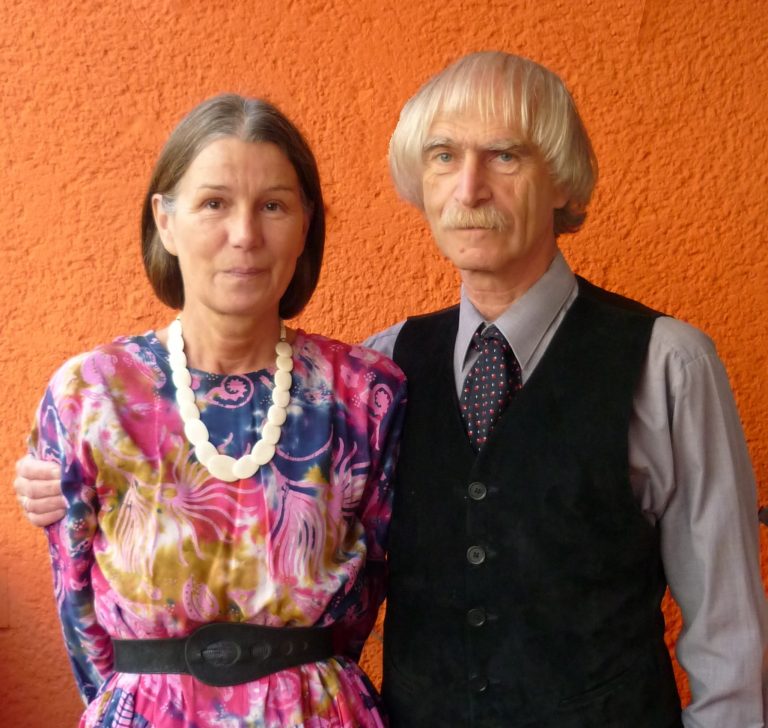
It’s been over forty years since the publication of your first book together. It might seem like a long time, and yet it is as if both books attempted to provide an analysis of the same topic – the deep structure of human existence. Is Symbolisation a compendium in this respect?
It is true that the common denominator of our writings published together can be clearly described. At the beginning of our career, structuralism was in its heyday, and along with other movements searching for answers beyond the superficial, it significantly influenced our thinking. Marx, Max Weber, several schools of psychology as well as semiotics, which defined the intellectual trends at the time, were also seeking out such deep structures. But perhaps the “deep structure of human existence” is too broad a definition. We were exploring social consciousness first and foremost, and looking for patterns in this context. After analysing various sets of values, world views, linguistic and object structures, and constructs from various walks of art and life, we found that all of these very different phenomena share the concept of symbolisation and symbolic thinking. So now when we try to explore the nature of symbolisation from the wide range of perspectives possible, we have come to a sort of summary of our scientific activities.
Just as a thought experiment, if you had to single out one book from your substantial oeuvre, would it be this one?
Obviously, I wouldn’t be happy if this was the only one book left from the entire oeuvre, because naturally many things we have analysed over the past decades are not included in this compendium even though we worked to incorporate as many earlier findings as possible. It is impossible to condense twenty-something books into a single one. And not just because of length limitations. Of course, since it contains a brief description of details from several previous research, it is the book that reveals the most about the great many things we do. But, just to give you an example, it wouldn’t be possible to understand one of our key innovations, motivation theory and motivation analysis method, just by reading the book. Another important theory that can be linked to us is the “intellectual production method”. As we have already mentioned several times in various places, Symbolisation is the final instalment of a trilogy, with Survival Strategies (Kossuth, 2007) as the first book, and Intellectual Production Method (Kossuth, 2013) as the second one. The core of the trilogy, Intellectual Production Method explores an alternative to the current capitalist model. Symbolisation is linked to this because we feel, as also mentioned briefly in the last section of the book, that it is precisely symbolisation and symbolic thinking that could lay the foundations of the epistemology of this social alternative.
The book explores an immensely wide range of subjects from the symbolics of gender identities and religion to quite mundane matters such as dietary habits. It is not an evident choice to bring this many divergent strands together. How did you find the final theme for the book? Did it develop organically, or did you identify the research subjects in advance?
Although the structure itself seems deductive, considering we cover the theoretical basics in the first chapters, and only then move on to present a multitude of examples, the book was developed exactly the opposite way. Writing is a sub-field if you like: it started forty years ago with an analysis of the operation of set of values, and then our focus shifted to motivations, worldviews of different eras, political communication that become a hot topic at the time of the fall of communism, or to the rapidly evolving home decoration and object culture. So the whole has indeed evolved, as the question puts it, organically into the current summary. There is one more important thing about our unique career: we never belonged to the type of social science experts who use the mainstream methodology of their science as a starting point. Albert Szent-Györgyi once said that he was always driven by the desire to understand a problem or a phenomenon and cared little about crossing the lines between two scientific fields. We shared this same view of sciences our whole life, and for this reason what our students could or can learn from us is not what the most current topics and methods of a scientific field are, but the approach to discovering the essential triggers of various phenomena, and to using anyone’s personal experiences and seemingly evident facts to reach underlying socio-cultural conclusions. One of our most important goals for this book was to give the reader an idea of the complexity of reasons behind the simplest thing – how the worldview of an era; the set of values; the hierarchy; the relationship to nation, religion, other human identities or modernisation; as well as individual motivations and survival strategies are expressed in a single collection of items, a single human behaviour or a single work of art and come to incorporate over the course of history all the layers of meanings evolving in different cultures. Uncovering various underlying meanings is deciphering of a sort. It is no coincidence that our books have titles such as Cyphers, Visible and Invisible Worlds, and two study compilations edited by us, Our Lives are Cyphers Vol. 1 and 2. But titles like Institution’s Facial Expressions Vol. 1 and 2 analysing the sight of cultural institutions, or Talking Houses exploring the symbolism of homes are also a reference to the unique language of symbolisation.
The first chapter makes several mentions of the means and approaches that could help “uncover the unique features of symbolic thinking”. To trivialize the question somewhat, why is this segment of life important in the first place? This question makes sense in a world where ordinariness is becoming increasingly prevalent.
It is important to clarify here what you mean by ordinariness and its growing importance? For example, it could be one of the unfortunate developments of recent years – the fact that public thinking is increasingly steered by the media towards the banal. There is a drastic decline in the overall ability to grasp more complex correlations and to comprehend more abstract wording. Texts that were universally circulated among the average intelligentsia are now regarded as excessively difficult by more and more people. This, in alignment with the postmodern approach of negating the great narratives, drives a wedge between a large segment of the population and understanding deeper correlations. Yet the spread of ordinariness could also be regarded in the context that science in recent decades has been advancing towards the components of social existence directly affecting everyone. Ordinary life is becoming the subject and key factor of scientific and art activities – to give you one example from this periodical, the growing prominence of inclusive design also fits into this trend. And this could be the first step towards the true democratisation of society.
But how is symbolic thinking connected to this?
Our whole life, we considered the point of our role as intellectuals to share what we learned in life with the widest possible range of people, in sharp contrast with the sequestered attitude of some of the intelligentsia, who use their knowledge (for example by using an esoteric-sounding technical vocabulary) to demonstrate their superiority and their entitlement to privilege.Symbolic thinking not only helps you understand deeper correlations – its use is also an interference with the processes of the world. As long as creating symbols is the privilege of the elite, the elite can use them to decide about the destinies of millions. Madách’s line “That for this letter ‘i’ to think they pass so resolute to death” from the Tragedy of Man just puts the general historical experience into words whereby the elite that produce the ideology creates symbols and controls the discourse to steer millions towards its own goals. (Devastating examples of the same are evident in the narratives of the two main sequence of events of recent years, the Coronavirus epidemic and the war in Ukraine.) The goal is to democratise the possibility of symbolic thinking, this highly effective tool, and to empower the widest possible segments of people to go from passive recipients of symbols and interpreters of symbols in a simplified manner to creators of symbols with a grasp of the richness and complexity of symbols. In many respects, advances in the infocommunications and IT sectors have already made this possible.
In addition to a large variety of topics, you also have an unusual authorial work method. Though anyone following your oeuvre is aware that you publish your works jointly, we should look at this subject a little more closely. How did you divide the authorial work between you?
To answer the gist of your question, it is impossible to separate the individual contributions in our writings. They are in the truest sense of the word joint productions. So it’s not like we each write our own texts. Even the idea behind and the basic concept of the books are developed in a joint thinking process and constant discussion. And then there’s the gathering of materials. Though of course we might have a situation when one of us deals with one part of the literature and the other with another, but oftentimes both of us deal with the same works. The most important part of the material gathering is the processing of research findings generated during the years: the interpretation of symbolic phenomena from various walks of social reality. In this phase, both of us provide our experiences from a different angle, relying on our unique skills. Preparing the outline of the book was also done jointly.
What about the writing of the actual texts?
What happens is one of us writes a piece of draft text, and the other one reviews, revises and adds to it. After the text is returned to them, the original author reviews and modifies it, and we keep on taking turns until we have a mutually acceptable version. This process involves a lot of heated discussions, because due to our different life experiences and preferences in perspective, we have different matters that we are sensitive or particular about. These, however, complement each other nicely. Naturally, you need to have common ground in terms of basic approach (which we do since the first moment we met), and the determination to find solutions that requires no one to drop an important aspect, make a compromise or subjugate their own perspective. According to our decades-long experience, it is possible to reach a common denominator in every respect (even if it is a struggle sometimes), which is why it is an optimal model not only in a romantic relationship or a joint creative process, but in a human relationship of any kind.
The last sentence of the blurb raises the possibility of a positive social process, namely that competition will someday be replaced by cooperation. It is as if this thought was a takeaway for the reader. Does it mean that Symbolisation should be consulted as a manual to understanding the real stakes of phenomena in the world?
As is also evident from our previous answer, yes, we do regard the decline of the one-sided competitive mindset as a major social goal. Though we do not deny the benefits of competition, it has become outdated alongside individualism over the past 500 years. All this is, as widely known for a while now, the product of the capitalist regime. Competition in intellectual life has particularly wasteful consequences. When a scientific concept, school, or artistic movement triumphs, the defeated concepts, schools and artistic movements are marginalised. That means that people whose skills and competencies are not related to the winning trend get side-lined, and their skills are wasted. Thoughts that do not fit into the current trends are lost. People that are not trendy will feel unwanted. And we know from arts that an artwork centuries or even millennia old can make an impact.
Those certain parallel truths…
It would be way more effective for humanity if the goal was not to supersede individual perspectives but to synthesise them. Not to vanquish, but to create synergy. Our whole life, this is how we related to the wealth of human thoughts, and this is why we believe that all those approaches that divide human thinking by excluding the rest (conservativism, liberalism, socialism; religious and atheist mindset; idealism and materialism, subjectivism and objectivism, and so on) are in fact, not mutually exclusive. They all stand for values and truths, and only become misguided when attempting to exclude the others. The development of the world hinges on the continued predominance of capitalism, which, while having some benefits, have become increasingly destructive and harmful – precisely because society has been overcome by it. Our book Intellectual Production Method summarises what we believe the alternatives to capitalism (and state socialism that proved unsuited to replace it) could be, and where and to what extent the preconditions for it exist in today’s society globally. At the moment, we are working on a booklet to formulate these statements in a form that is readily comprehensible to a wider public. To get back to the profile of this magazine, design in its broadest sense means designing social processes, and we believe the time has come again for “great narratives” (thinking around the foundations of society).
// /

